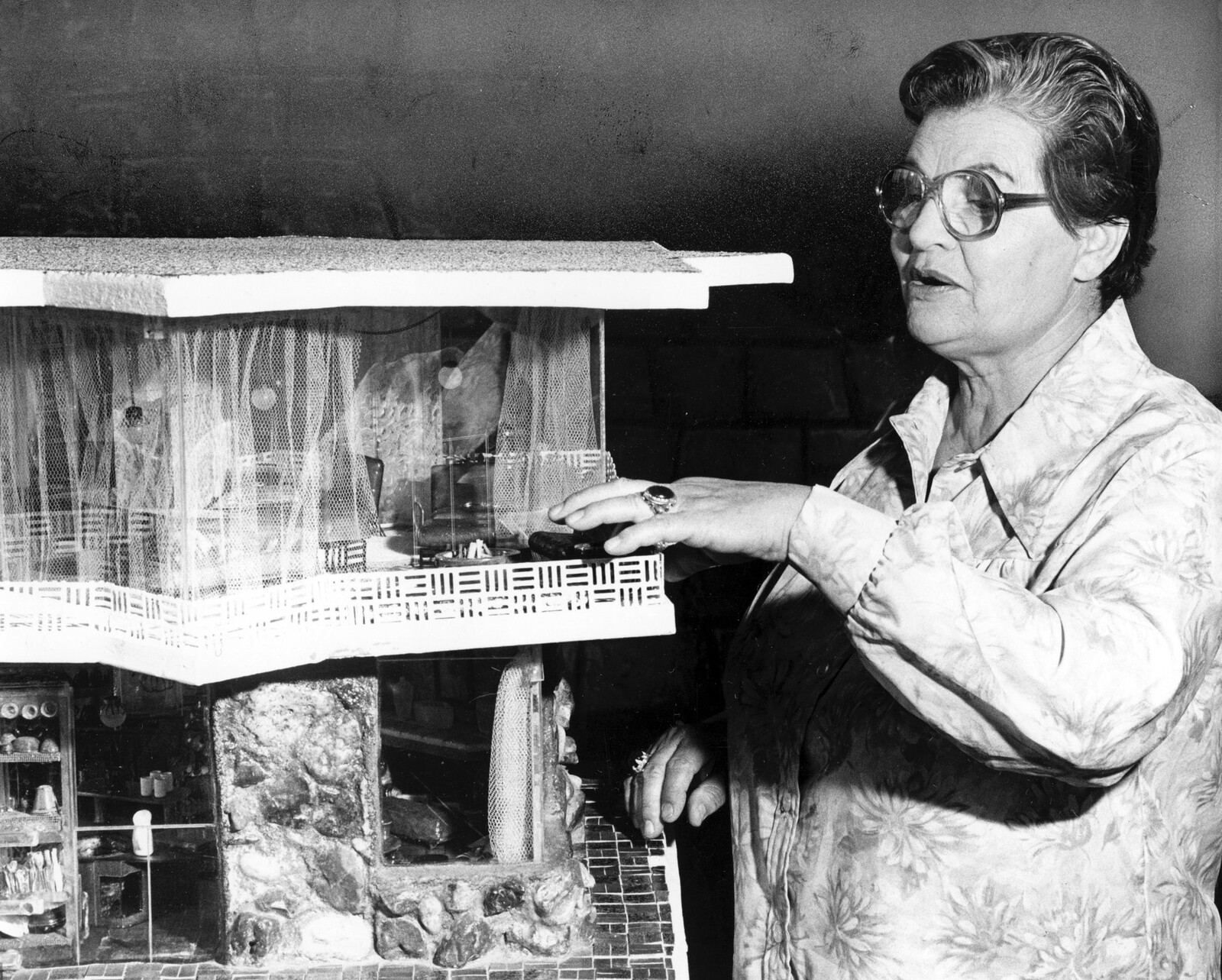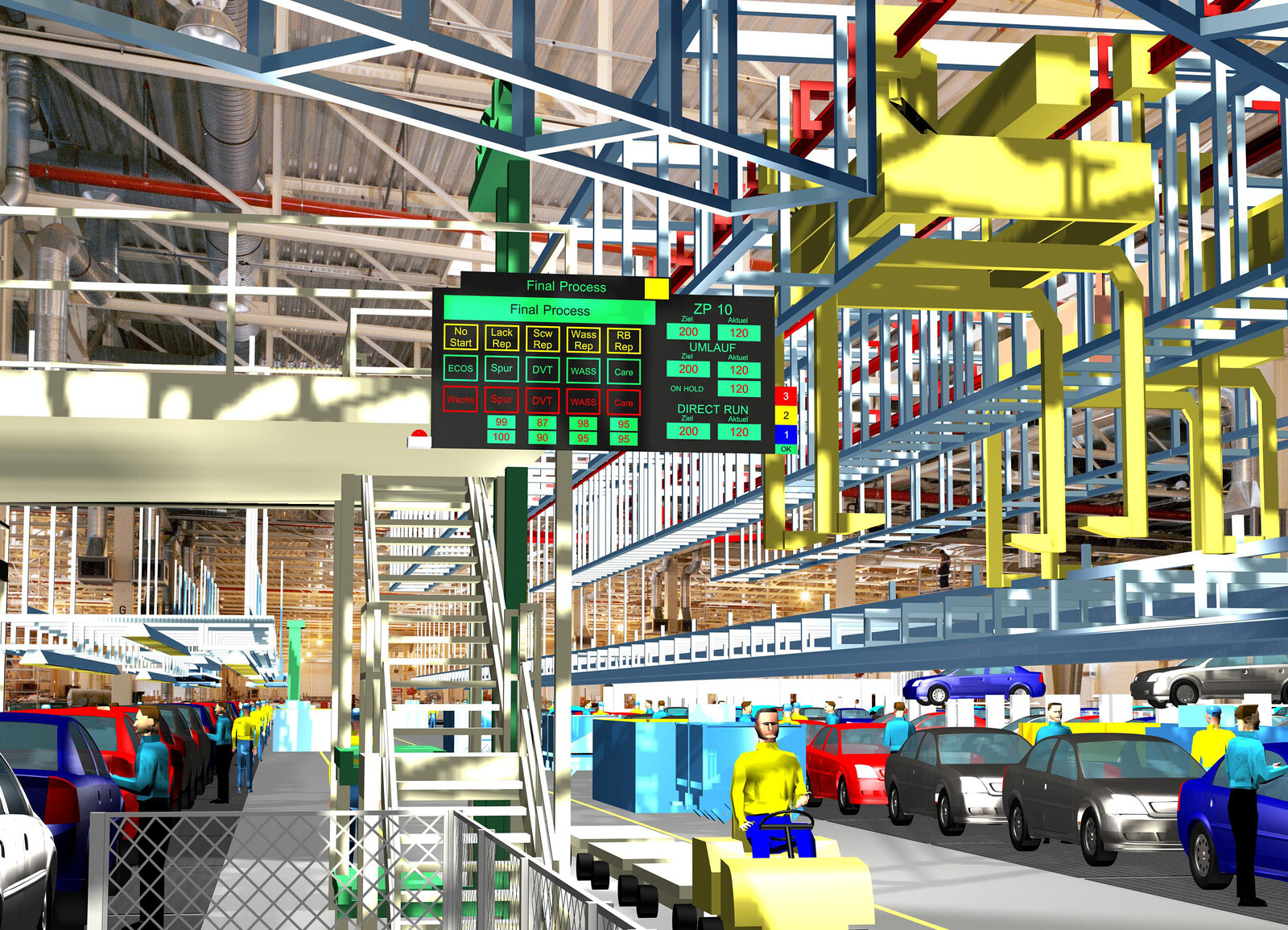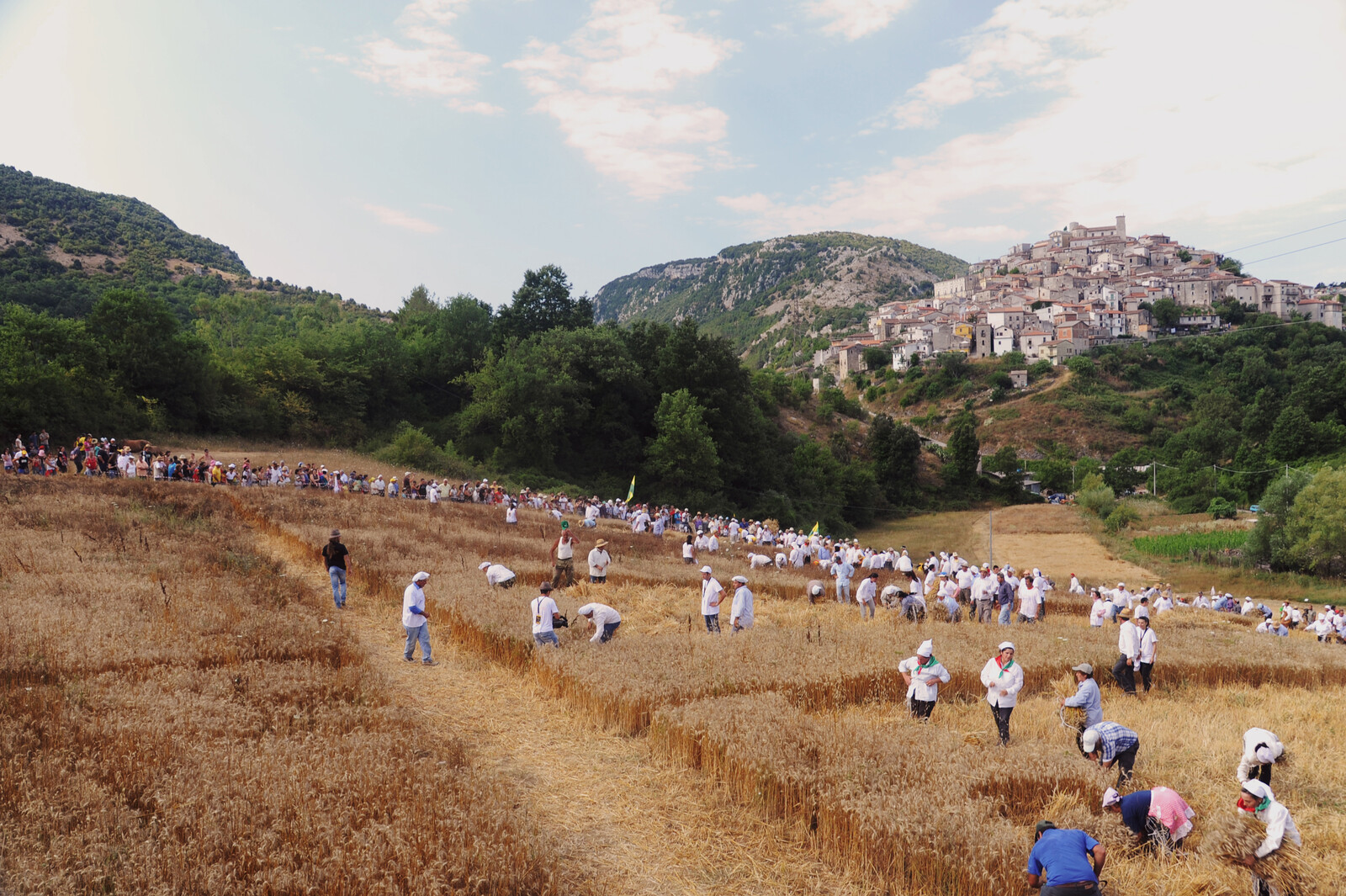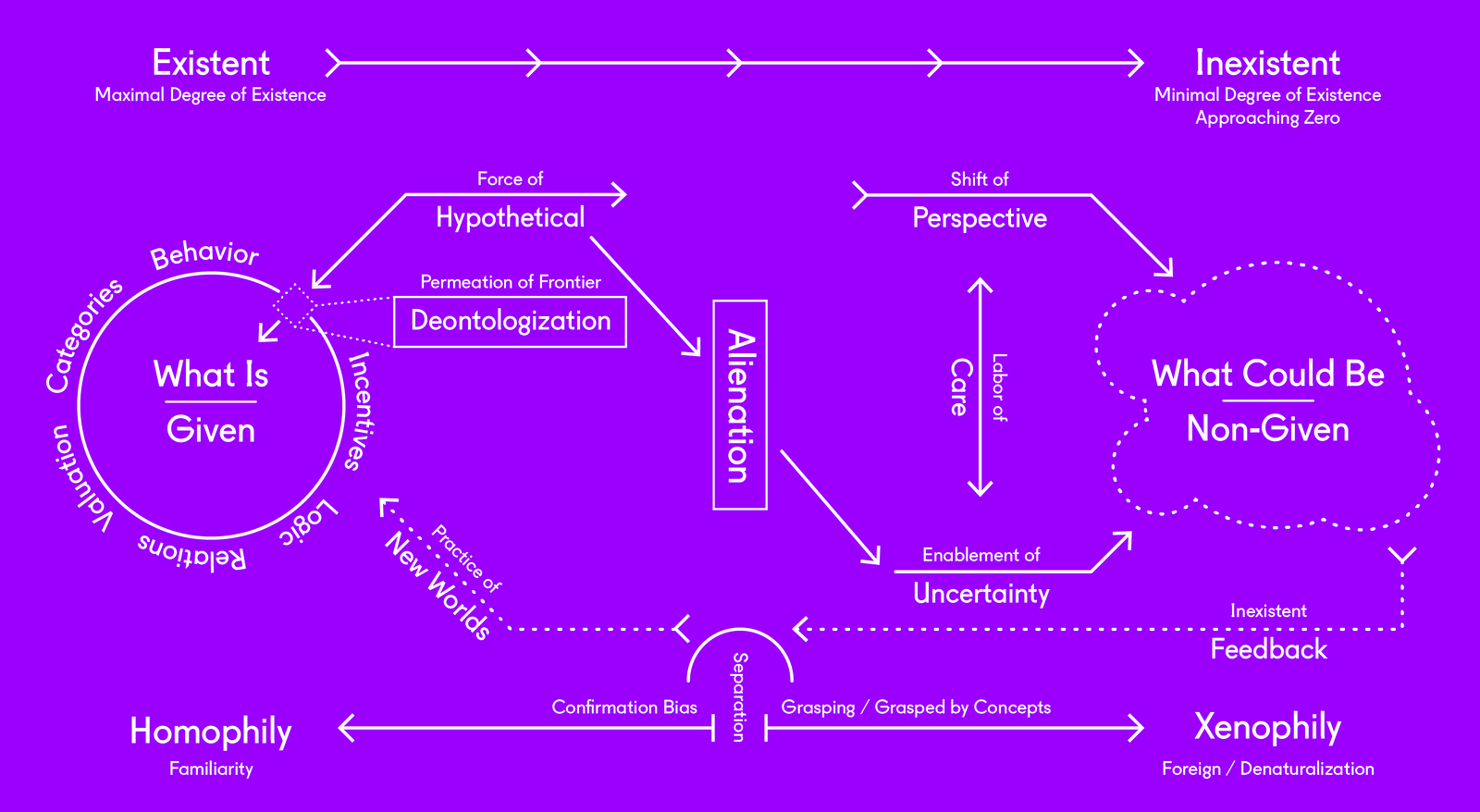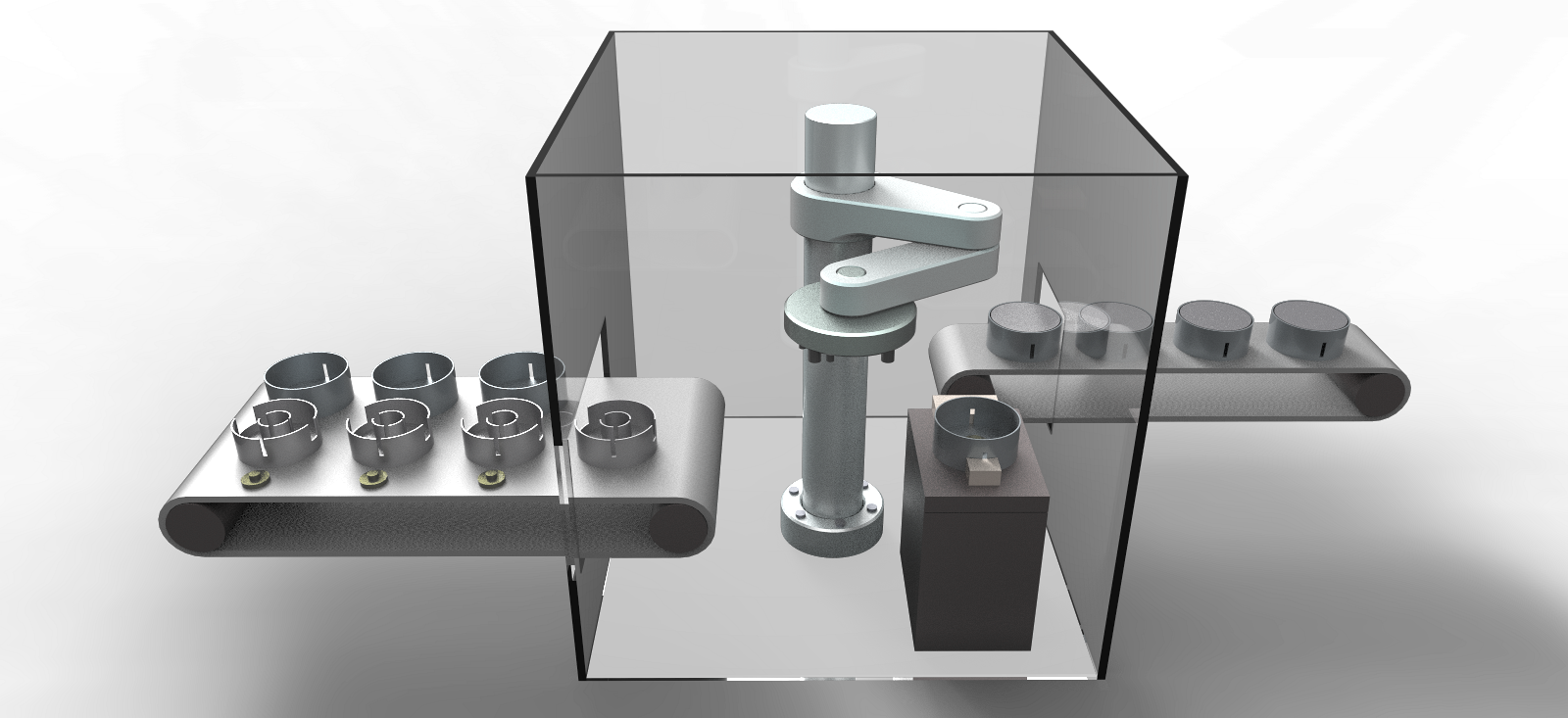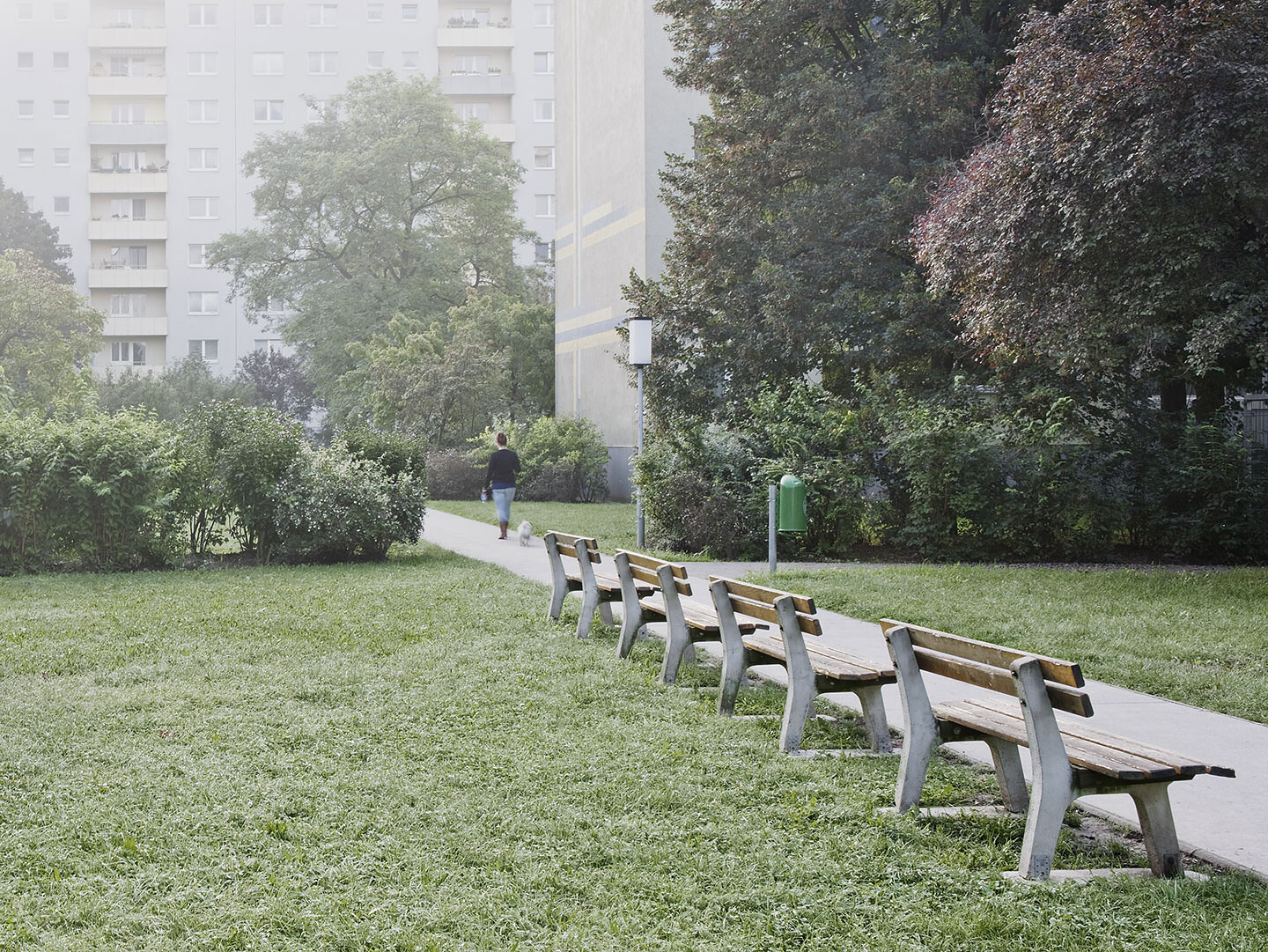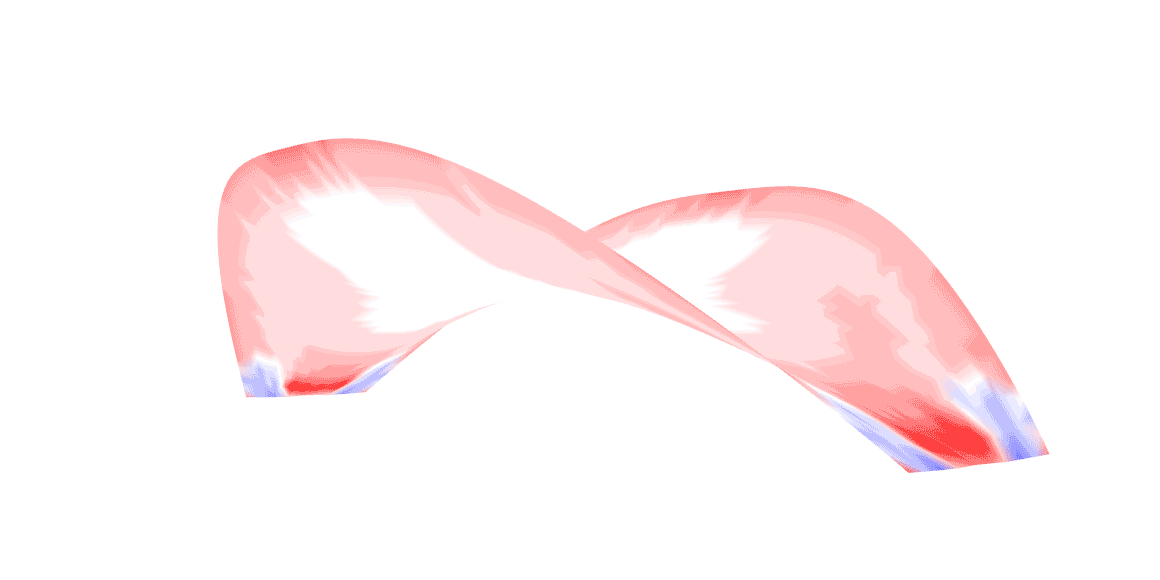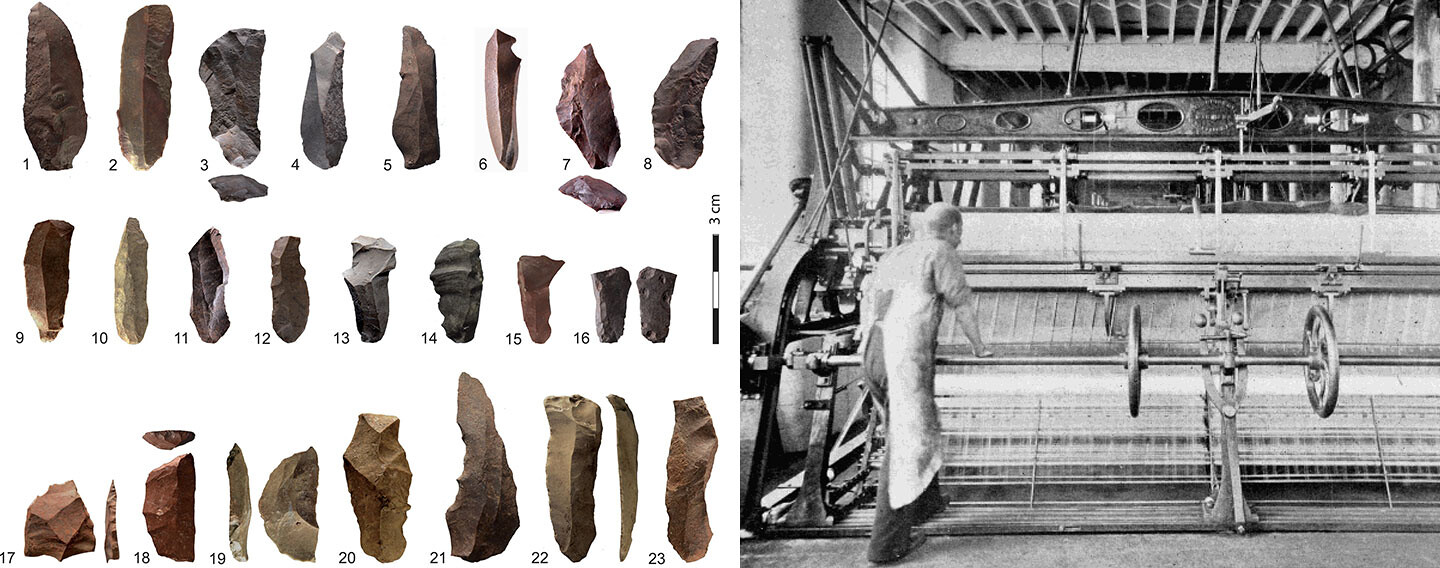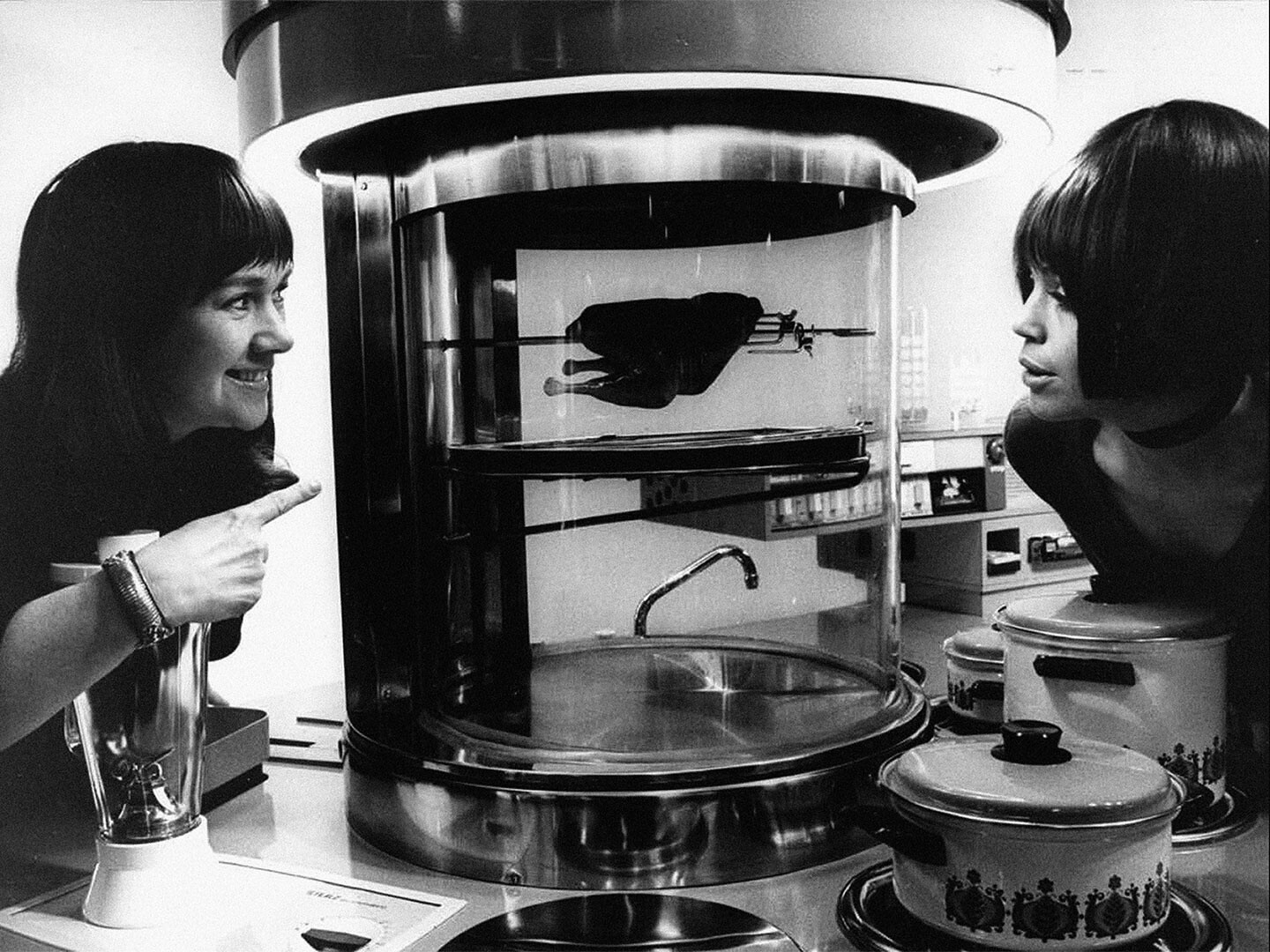There are two main methods to build the concrete core of a tower. The more usual one consists of building one floor at a time with formwork that is later reused for the floor above. The other one is slip-forming, a type of climbing formwork, where concrete is steadily poured into a continuously moving mold that slides upwards at the same speed as the concrete dries. A friend in the construction industry explained that even though it was hardly necessary unless building a dam or an oil rig, slip-forming was often requested by clients for their towers. He continued by saying that clients didn’t request it for performance or because it can be faster under certain conditions (it is more expensive and riskier to manage) but mainly because they enjoyed the idea that the core of their building was an extruded monolith. Somehow, the continuity of the streamlined process inspired confidence.
This anecdote is quite indicative of the imaginary at play in 3D printing. There is a peculiar emotional currency to generating a building out of a single, continuous pour of concrete, one that lives in a broader architectural context beyond the sole technique of printing. The novelty of 3D printing opens up worlds of formal possibilities which were previously unfathomable, and it’s undeniable that the future capacity to print architecture has powerful political implications that could revolutionize the production of inhabitable space as we know it. However, at this point, while the possibilities of the new process are steadily making its way into the mainstream, the actual applications of 3D printing remain far from the dream-world described by industries and enthusiasts alike. From our experience this appears to be less because of a lack in technical capacity than the fact that the current politics of construction do not gear 3D printing toward being the social technology it should aim to be.
The features of the dream-world of 3D printing are well-known: The notion of “standard” gives way to the infinitely customizable at zero extra cost. Shapes and forms are liberated from the constraints of modern industrial production. A minor tweak in software programming undoes entire economies of scale. Production processes approach less or even zero time for manufactured goods (whether cutlery or building elements) and their sites of production are miniaturized and transportable (including to Mars). Robots replace most tasks performed by humans and open to utopian, work-less lifestyles supported by universal income where users have the tools to design their own space without mediators
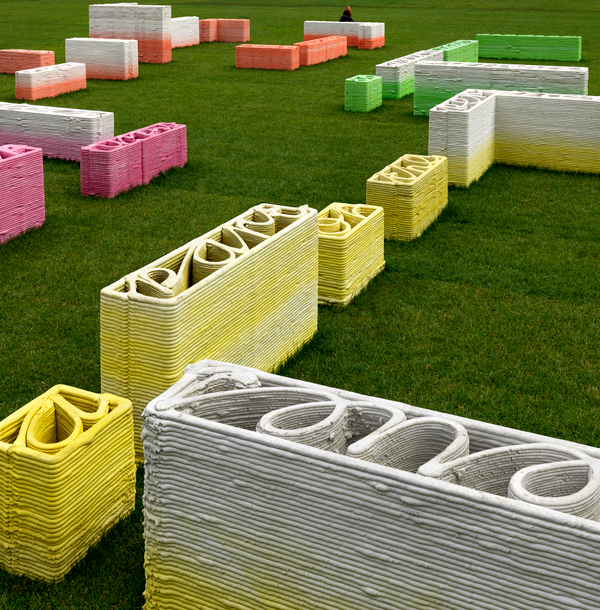

Installation view. I’d rather be outside, åyr, 2017. Photo: GJ van Rooij.
The last years have seen some of these theoretical projections take decisive steps towards real-world application, especially in the construction industry with the many breakthroughs in concrete 3D printing. The first inhabitable printed structures have started to emerge in various locations around the world. Amongst them, the Italian WASP (which stands for no less than “World’s Advanced Saving Project”) constructed a twelve meter-high printer that is said to be able to provide “healthy, beautiful and human-scale homes with costs that tend to null”; San Francisco/Moscow-based 3D-printing startup Apis Cor demonstrated it could “3D-print concrete walls for a small house in less than 24 hours”; with XtreeE, Philippe Morel realized a 3D-printed concrete column for a building in Aix-en-Provence as well as a concrete pavilion with Dassault Systemes; Chinese company ZhuoDa built a two-story villa in less than three hours; Beijing-based HuaShang Tengda printed a 400m² earthquake resistant villa; and Chinese Winsun, which built a mansion, an apartment block, and a series of single houses that are printable in less than a day of printing, two days of assembly, with only three workmen on site and using up to 50% waste materials.
With the shroud of possibilities seemingly offered by the machines, it was disheartening to be told during our search for a partner to develop a 3D printed project for the Stedelijk Museum as a part of the 2017 Holland Festival that many of those references were in fact fake or at least factually distorted. As we learnt that their printed homes were in fact much more expensive to produce than by using traditional methods, Winsun didn’t reply to any of our emails. We got an indirect response from another Chinese 3D printing company who advertised concrete printing capabilities through one of our professional partners in Shanghai, but were told in an email that Ms. Fang had kindly declined working with us: “She told me your quantity is too small, they normally only accept the big quantity like over 500 buildings, the 3D printer machine cost 5 million USD and can’t print the small quantity projects, or the print cost will be much higher.” Didn’t they have a printer already? Why would they refuse us based on a small-scale production when the whole point of the technology was to print custom for the same price as standardized? Who prints more than 500 buildings today anyways?
As advanced and convenient as it is campaigned in the media, 3D printing large scale elements is not an easy task. The production process is burdened by various problems. The continuous pour needed to print is a highly technical and sensitive procedure, the structural performances are uncharted and thus unsafe for public use, and transportation is often a deal breaker because large monolithic pieces don’t fit the standards of size and weight. It soon became clear that we had to work with a local company who could handle transport and who would be receptive to the public exposure that the project offered (which led us to work with BRUIL, a Netherlands-based concrete company whose main business was mortars and prefab elements and who had recently mastered the printing of pigmented concrete.) It also became clear that 3D printing technology was at the center of an intercontinental industrial war involving a lot of intelligence and propaganda, which surely was responsible for some of the opaque reality of 3D printing. No pictures were allowed in any of the facilities we visited, various NDAs were signed, misinformation fired about competitors… Yet everyone still concurred about the revolutionary inevitability of the technology, incanting the same viral rhetorics that have been inflating the investment bubble for 3D printing.
This experience felt reminiscent of the modern era when standardization and industrial production was claimed to revolutionize urbanization by making space accessible to all for close to no money. While enthusiastic tale of mass-distribution was to an extent realized with the explosion of mass-produced housing either in the form of condominium or suburban developments, the emancipatory and humanitarian promises of such mass-developments later proved to fall short. Such deception in technological salvation is also evocative of the post-war industrial revolution that peaked in the 1970s and where plastics, injection molding, and inflatables were claimed to herald a new paradigm that would transform the world through consumption. Surely, some goods became cheaper to produce, some services more accessible, some technical parts more efficient, and some prototypes easier to build, but the new technological goods didn’t change society the way they were meant to. The new production processes of the twentieth century revolutionized manufacturing, probably quite similarly to the way 3D printing and automation promises to do today. But without policies defining their socioeconomic deployment, their political potentials failed to revolutionize society.
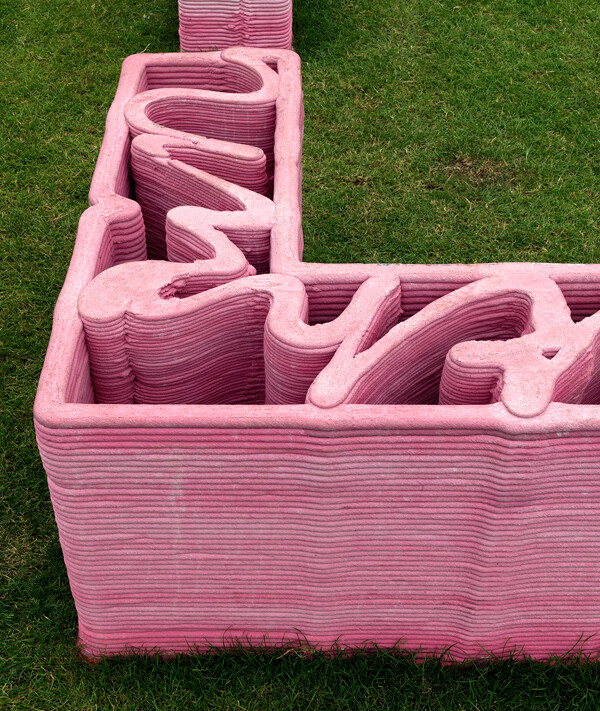

Detail view. I’d rather be outside, åyr, 2017. Photo: GJ van Rooij.
Since the crisis of 2008, the relatively harmless ideals of the niche world of makers and designers have made their way into the mainstream rhetorics of businesses, theoreticians, and world leaders alike. In the 2013 “State of the Union Address,” Barack Obama promised that 3D printing would transform the manufacturing landscape with the appearance of fab-labs and hubs that would turn “regions left behind by globalization into global centers of high-tech jobs.” Quite exemplary of the discourse at work within governments are the two books: The Third industrial Revolution (2011) by Jeremy Rifkin, who in a non-representational position of power advises both the European Union and China on what he proclaims to be the new industrial revolution; and The Fourth Industrial Revolution (2016) by Klaus Schwab, founder of the World Economic Forum, whose controversial meetings take place in Davos. In different ways, the two books explain the inexorable social transformation being brought by new technologies in all fields. They let people glimpse the possibility of a reorganized world, one that could be energetically and materially resolved thanks to the advent of a new paradigm of technologies, while warning readers that the transition won’t be necessarily easy and to brace for change.
Although tech-utopian rhetorics have a lot of currency in the jargon of statesmen and businessmen, in the practical development of 3D printing, vast sums of public money have been pumping into the formation public-private partnerships. $500 million was invested to form the formation of the Advanced manufacturing partnership AMP in 2011, and the National Additive Manufacturing Innovation Institute NAMII was formed in 2012 with the help of $30 million from US Departments of Defence and Energy. Recent history casts a gloomy shadow over the proclaimed humanist inevitability of 3D printing. While it will very likely transform many realms of production and goods will be given further dimensions of customization, it is very improbable that 3D printing will escape the for-profit ethos of corporations.
In fact, the concrete 3D printing industry has a contradictory relationship with the housing crisis. The construction industry was particularly hit by the financial crisis, which was really a real estate crisis, with the subprime mortgage crises as its most paradigmatic example. Many private and public developments were put on hold while the economy adjusted to the disappearance of very large sums of loaned money. No one was building and the construction industry was out of work. With no demand for concrete mortar, dry mortar and prefab concrete elements, BRUIL conducted a market study that led them to concentrate their effort on R&D by establishing an advanced manufacturing division focusing on concrete 3D printing. It was a diversification strategy that reacted to the crisis by sidestepping it rather than seeing it as an opportunity to tackle core issues.
There are reasons to think that the decision to focus on concrete printing technologies following the financial crisis was largely driven by the corporate strategy of targeting the new affluence of post-crisis clientele with objects of consumerist appeal. Indeed, now a decade after its beginning, wealth has become increasingly polarized and democratic salvation through mass-customizable automation is quite unlikely. The most foreseeable market for customizable 3D printed construction is in wealthier clients who are looking for the newest, most unique design. When housing is systemically unaffordable, the political excitement towards mass-customization which has been so avidly relayed by the media is hollow. This false promise of technology somewhat reminds of Airbnb who emerged in 2008 out of the crisis with the project of optimizing the usage of the existing housing stock and facilitating the sharing of space, but which in fact accelerated displacement and allowed landlords to raise the rents en masse.
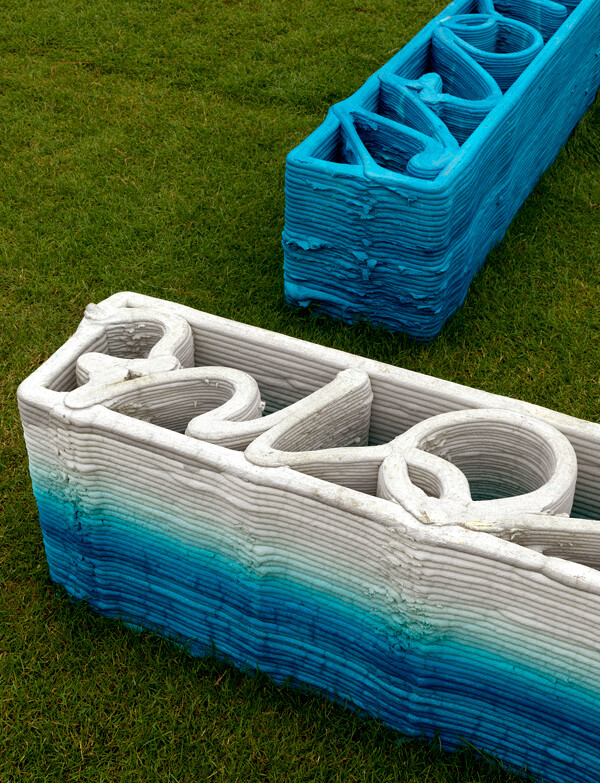

Detail view. I’d rather be outside, åyr, 2017. Photo: GJ van Rooij.
However, it would be misguided to point the finger at the construction industry for acting as such. Its companies sell products in a market, and they have little to do with the financing policies relative to housing that were at the root of the crisis. Instead, accountability should be sought from governments who have been incapable of honoring their duty towards the living conditions of all citizens. In the context of 3D printing and automation at large, they are the ones to blame for enthusiastically relaying the allegedly democratic capacities of such technological advances without addressing the realities of their applications; without designing the ambition behind their implementation. To our knowledge, there are no real policies or public programs pushing the construction sector towards the development of systems for the benefit of the many. Beyond 3D printing, the generalized appropriation of dreamworld rhetorics has been a means for governments to delegate their democratic responsibility to new technologies by claiming that they carry democracy within themselves. It is not only a political cop-out, but governmental negligence to call upon citizens to wait and brace through austerity because “good” change is supposed to inevitably come with technology, when there is absolutely no reason to believe that any systemic change is bound to happen.
This brings us back to the periodization of Rifkin and Schwab who prophesize the next industrial revolution. Schwab literally warns about the “impacts” that will result from the deep shifts at work today (including 3D printing and automation) and calls for all to get ready to adapt to the new world order—or else. With rhetoric like this, there is a general sense that politics, politicians, and citizens have very little power in the face of technological advances, apart from adapting. It is as if history would unfold with or without anyone. The proposed periodization of today as the next industrial revolution undoes the sense that there is any political agency over techniques and forms of life. Instead, such rhetoric instrumentalizes an analogy of the past to convey a sense of inevitability, and therefore imply that the contemporary crisis is grounded in a technical delay rather than political impotence. It suggests that neither politicians or companies are really responsible for the crisis because everyone always loses to the inevitable course of progress. The dramatic result of this thinking is that politics are freed from complicity or responsibility towards both the crisis and the injustices of technology; they can be guilty solely for not seeing and being overcome by the coming future. The crisis is rendered into a natural catastrophe rooted in the latency of politics with regards to progress.
This being said, 3D printing and all the associated contemporary technologies do have impressive capacities. A real politic of construction is needed to unleash the true possibilities of the technology, one that doesn’t simply regurgitate the dreamy prospects envisioned by and for a privileged class. A room of one’s own is the condition for everyone’s poetic liberty, said Virginia Woolf. Housing is a human right, said Martha Rosler. The current shortage of private spaces is as dramatic as the disappearance of public spaces. Cities around the world are moaning; people are begging for more places to occupy. Printing ruins isn’t enough. What we need is surplus space.
Artificial Labor is a collaboration between e-flux Architecture and MAK Wien within the context of the VIENNA BIENNALE 2017 and its theme, “Robots. Work. Our Future.”
Category
Subject
This text follows åyr’s experience in producing I’d Rather Be Outside (2017). The installation is composed of a series of 3D-printed concrete elements that form a landscape of domestic rooms, where each element spells out a word and each room becomes the fragment of a poem. On this occasion, åyr also invited Martha Rosler to exhibit her work Housing Is a Human Right, an animated billboard critiquing the alarming increase in homelessness in the United States, originally installed on Times Square by the artist in 1989.
Artificial Labor is collaborative project between e-flux Architecture and MAK Wien within the context of the VIENNA BIENNALE 2017.



